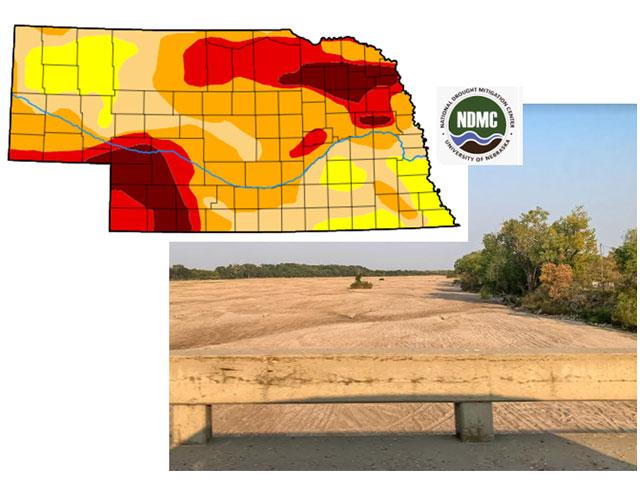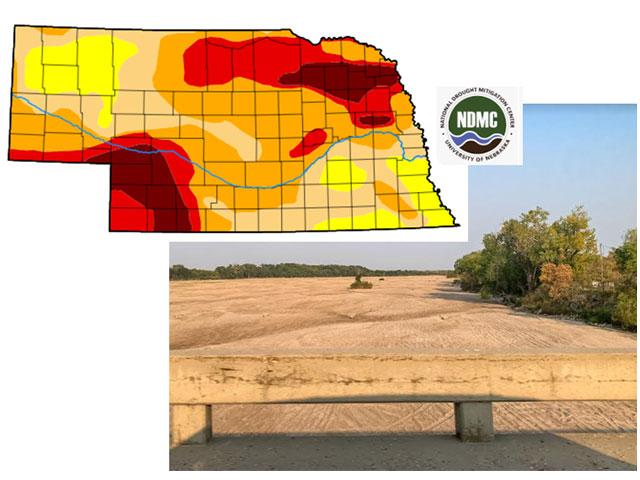Ag Weather Forum
It's A Real Drought When a River Dries Up
Drought in the Western Corn Belt is on a scale that's the worst since 2012. The Platte River, Nebraska's major river, is a good example of that extreme dryness. In parts of central Nebraska, the riverbed is bone dry. Close to two-thirds of state is in severe drought or worse according to the Sept. 6 U.S. Drought Monitor, with more than one-quarter of the state in either extreme or exceptional drought. This occurrence is one more addition to the list of either near-dry or completely dry rivers around the world in the summer of 2022. They include the Colorado River in the southwestern U.S.; the Loire River in France; the Rhine River in Germany; and the Yangtze River in China.
When it comes to crops, August brought mostly below-normal rainfall to the Western Corn Belt. The USDA Midwest Climate Hub in Ames, Iowa, notes in a summary this week that widespread dryness highlighted August into early September in the Western Corn Belt with much of the Plains and portions of Iowa and Missouri receiving less than 25% of average precipitation (one-half inch or less in some areas). Crop condition ratings for corn have already been identified as declining due to heat and drought in July. Soybean ratings are joining that slide in western crop areas. DTN Contributing Analyst Joel Karlin noted that Nebraska and Kansas soybean ratings have declined substantially over the past two months.
P[L1] D[0x0] M[300x250] OOP[F] ADUNIT[] T[]
Causes of this dryness are hard to pin down. However, there may be at least some connection to the elements which blasted the western U.S. in early September with dry and extremely hot conditions, including hottest temperatures on record in many locales. "Attribution is a tricky thing and typically comes well after events, but I'm sure conditions off to our west and south have had, at a minimum, some effect on how drought behaved and expanded this summer," said Mark Svoboda, director of the National Drought Mitigation Center in Lincoln, Nebraska. "I would also say that the back-to-back La Nina events played a role as well and the threat of yet another (third) such event this winter may not bode well for a lot of these same areas next growing season."
Forecasts through the fall season call for very little in the way of a major pattern change for the Western Corn Belt, with above-normal temperatures in the entire region and below-normal precipitation. This pattern is not favorable for soil moisture recharge. That means dry riverbeds like the Platte River may not fill up very soon, and will be a visible witness to the intensity of the 2022 drought.
Bryce Anderson can be reached at Bryce.Anderson@dtn.com
Follow him on Twitter @BAndersonDTN
(c) Copyright 2022 DTN, LLC. All rights reserved.






Comments
To comment, please Log In or Join our Community .